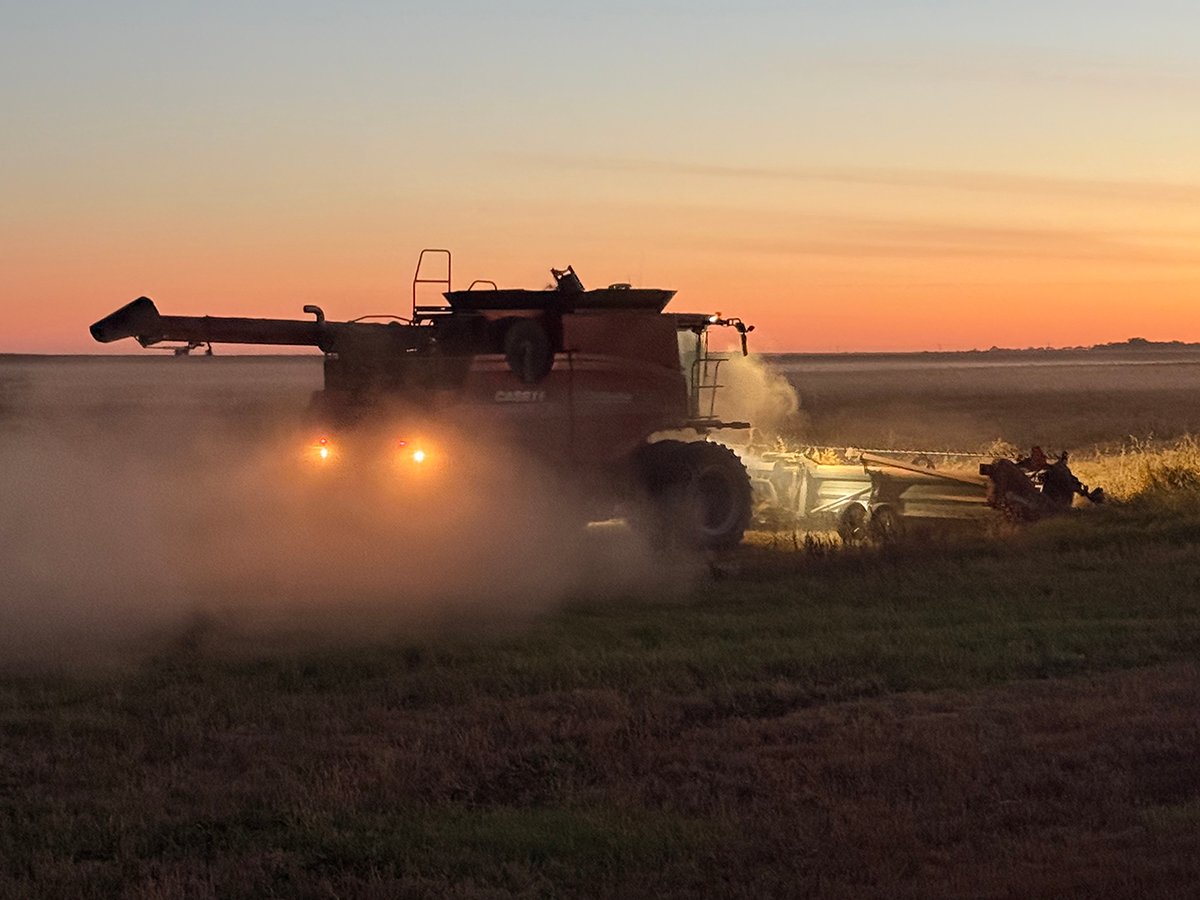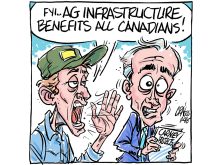During my 24 years as a veterinarian, the biggest change has been the shift from the 911 fire engine practice to one involving herd health procedures.
No one is happy in a surprise health crisis. With emergencies, I find veterinarians are often considered the necessary evil to solve the problem. On the other hand, herd health calls have a co-operative spirit with the vet becoming part of the food production chain.
Not many years ago, our practice did more than 450 caesarean sections. Nowadays, despite larger cow herds in our area, we do fewer than 100. That is a four-fold decrease.
Read Also

Downturn in grain farm economics threatens to be long term
We might look back at this fall as the turning point in grain farm economics — the point where making money became really difficult.
Being careful with bull selection and watching nutrition and exercise significantly reduce calving problems. There will always be the odd uterine torsion or monster calf. These are not preventable but their incidence is rare.
Breech births are the most frequent malpresentations that veterinarians face and we do see more of them, with twinning increasing.
Overall, veterinarians are happier not having to spend endless nights working during the spring. They can devote more waking time to important preventive decisions such as developing vaccination programs, parasite control, nutritional consultation, bull testing and selection.
Fertility testing of bulls and pregnancy examinations of cows are procedures all farms should have done by their vet. Both have a huge economic return to the bottom line. I am happy to report I have never performed either procedure at 3 a.m.
These procedures are booked in advance. Neighbours often book together to minimize mileage and use each other’s casual labour. They also exchange management ideas at this time. With everyone attentive, any other health concerns can be discussed.
The veterinarian seizes this opportunity to assess nutritional condition of the herd, checks for parasites and samples for other things beneficial to the herd.
Even though blanket herd health policies are good, every herd is unique and may require a different vaccination or nutritional supplement. We cannot paint all herds with the same brush. Geographic location, cattle type, feed source, month of calving and knowledge of workers may all require tweaking of an overall herd health plan.
With sick calves and cows, veterinarians have changed focus from the individual case to the herd.
Is this the sentinel case or just an incidental one? With sentinel cases we can initiate preventive measures in the herd or change the management plan for the following season. The focus is preventing disease rather than treating it.
Veterinarians need to educate their clients. Every producer is at a different level. Some know the latest developments and keep us on our toes. Others are just starting in the business and everything is new to them. Veterinarians must be able to converse at all levels.
Facilities for handling large animals have improved greatly over the years. Maternity pens make calving and c-sections easier than the old “tie the cow to a post with a lariat.”
Chute systems with good palpation cages make pregnancy checking faster and more economical.
I believe stress on the cattle is greatly reduced with these chutes because animals are caught and squeezed immediately, reducing struggle.
Blood sampling or other monitoring tasks are not the major ordeal they used to be with poor handling facilities.
Procedures like bull evaluations could not be done at many farms in the past because facilities were not large enough or strong enough to handle them.
As a result of improvements in this area, bulls are given the necessary health treatments, including foot trimming. Health and longevity are improved in the herd sires.
Roy Lewis is a veterinarian practising in Westlock, Alta.
















